
Often I heard people say they would like to pick up Sashiko stitching but how to get it started?
Sashiko Stitchwork a timeless craft:
I’m going to share with you my experiences and insight, which perhaps not everyone agrees to. It’s just my own opinion based on research, study, learning and practicing. If it’s helpful for you – great, or – it can be left aside:
I picked up sashiko stitching years ago for its simplicity and complexity, practicality and effectiveness in terms of big, thick thread and big stitches on dark indigo fabric. The seemly unchangeable geometric patterns are lively and even cheeky when they are used as a part to compose a design … The forever young indigo and brown… why do they never grow old and out of life? Just simply beautiful. My love for this skill took me to research its history, study from books, videos, other fellow stitchers near and far and most of all – pieces were made by those in the past.
There is so much in this ancient yet modern technique. But, to taste it, grasp it and appreciate its beauty ins and outs, I’d suggest diving in and doing it. When you start tracing pattern with your pen and your threaded needle passes through your fabric, sashiko teaches you what it is 🙂
It’s a type of Japanese folk art used by ordinary women in the past to mend worn clothing or home-wares, extending the life of these items and adding beauty through intricate stitching. During cold winters, sashiko stitching served a dual purpose of mending and insulation. By layering fabrics and stitching them together with the running stitch, women could create warm and cozy garments and blankets to keep themselves and their families comfortable during the harsh winter months.
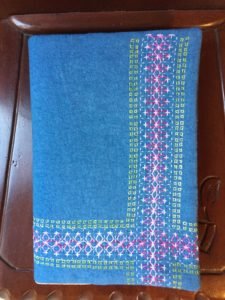
A book cover I made with Sashiko Stitch.
In an age of mass production and disposable consumerism, products like this stand out as a reminder of the value of slow, deliberate creation. They invite us to pause, to appreciate the beauty in simplicity, and to rekindle our connection with the tangible world around us.The next time you pick up a book, take a moment to appreciate its cover. And if it happens to be adorned with Sashiko stitching, allow yourself to be transported not only into the narrative within but also into a realm where artistry and storytelling intertwine in a tapestry of beauty and tradition.
Learning how to Sashiko Stitch involves several key steps:
Gather Materials:
When diving into the world of sashiko, acquiring the right supplies is crucial to ensure a successful and enjoyable stitching experience. While many basic sewing supplies can be used for sashiko, there are some specific tools and materials that are tailored to this traditional Japanese embroidery technique.
First and foremost, invest in high-quality sashiko thread. Sashiko thread is typically thicker than regular embroidery thread, which gives your stitches a bold and distinctive look. Although traditional sashiko often involves white or indigo thread, it’s available in a wide range of colors.. Experimenting with different colors can add a modern twist to your sashiko projects while staying true to the essence of this ancient art form.
Next, consider using indigo fabric for your sashiko projects. Indigo-dyed fabric has a rich history in Japanese textile traditions and is often associated with sashiko. Its deep blue hue provides a striking contrast to the white or colored sashiko thread, resulting in visually captivating designs. Look for indigo-dyed fabric specifically marketed for sashiko or opt for other tightly woven cotton fabrics that can withstand the rigors of stitching.
When it comes to needles, sashiko needles are long, sturdy, and have a larger eye compared to regular sewing needles. Their length allows for multiple stitches to be loaded onto the needle at once, making stitching more efficient. Additionally, the sturdy construction of sashiko needles ensures they can withstand the repeated pushing and pulling required for sashiko stitching without bending or breaking.
To transfer your sashiko designs onto fabric, use a water-soluble fabric marker. These markers allow you to draw your design directly onto the fabric with ease, and the markings disappear with a simple spritz of water once you’ve finished stitching. This ensures that your design remains visible while you work without leaving any permanent traces behind.
By acquiring sashiko-specific supplies such as indigo fabric, sashiko thread, needles, and fabric markers, you’ll have everything you need to embark on your sashiko stitching journey with confidence. With the right tools at your disposal, you’ll be able to create stunning sashiko pieces that showcase the beauty and intricacy of this timeless embroidery technique.
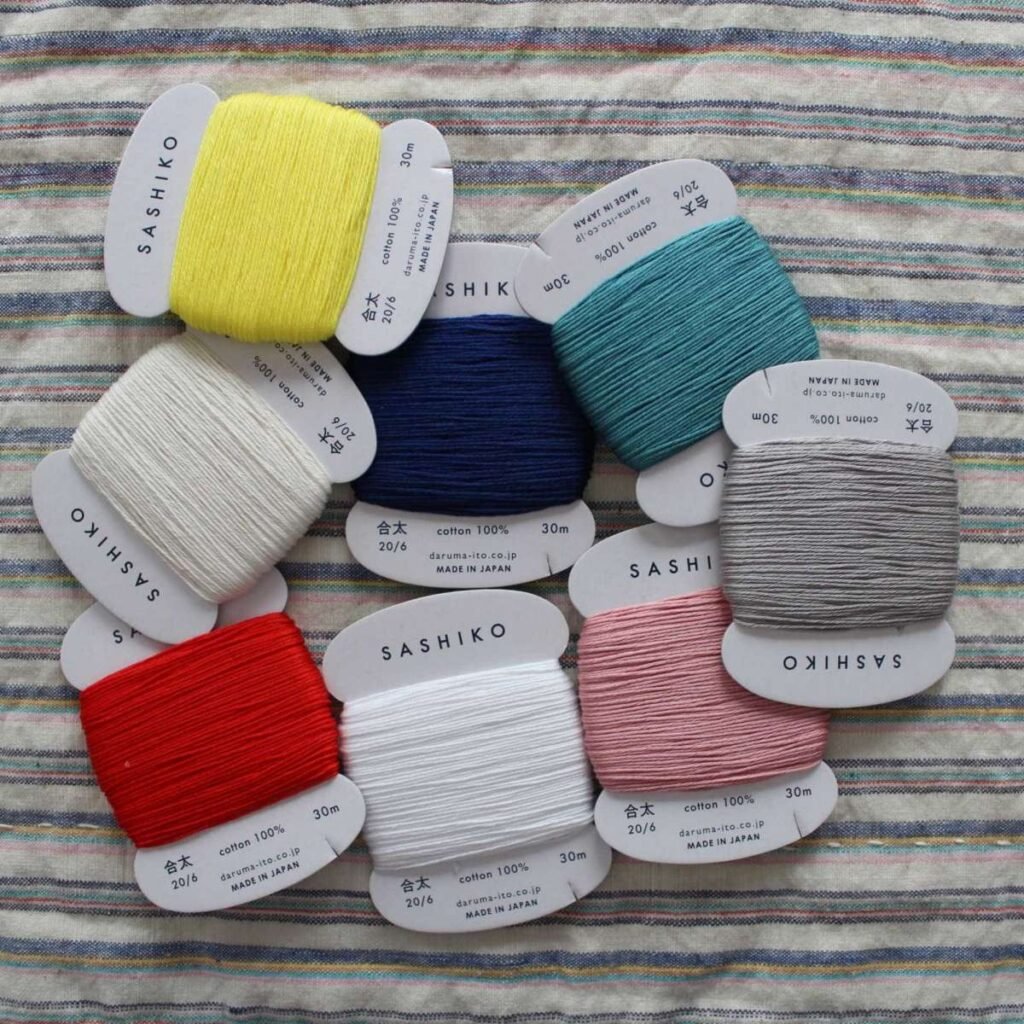
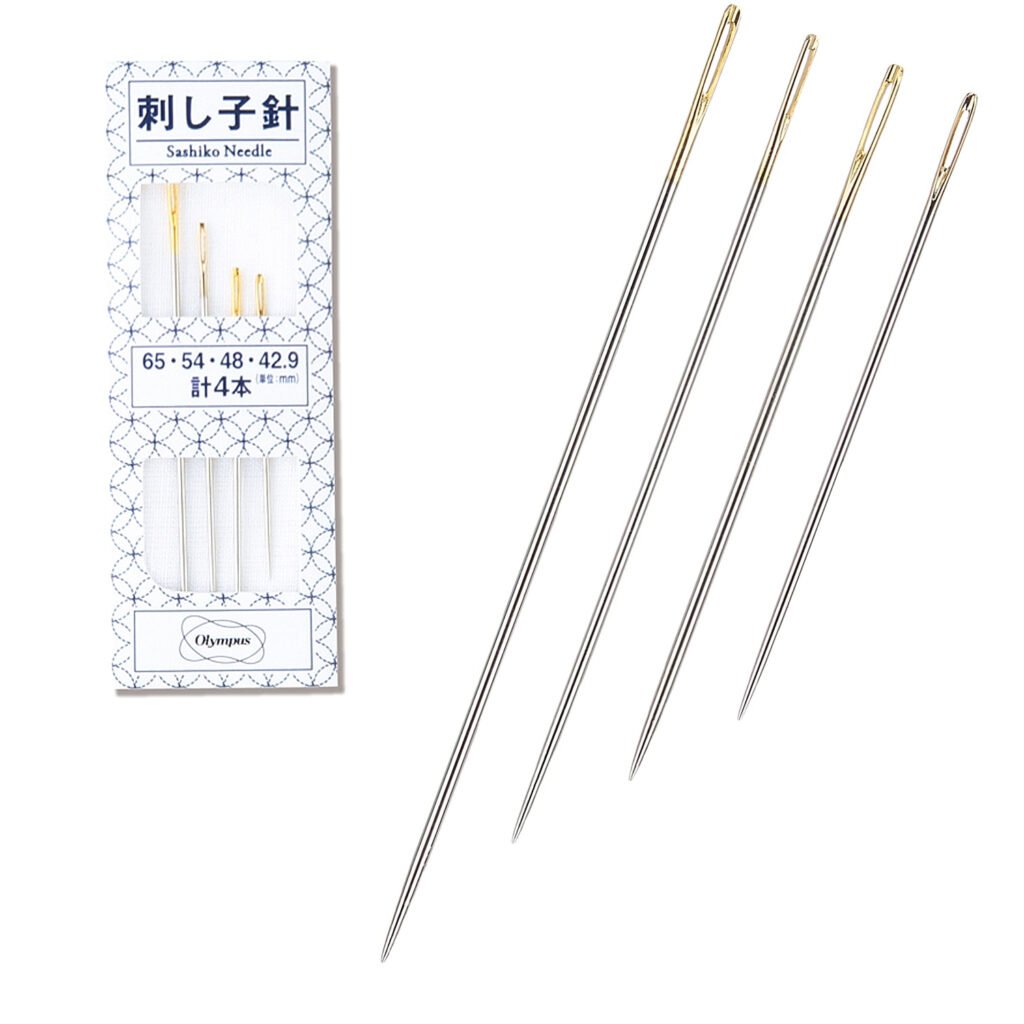
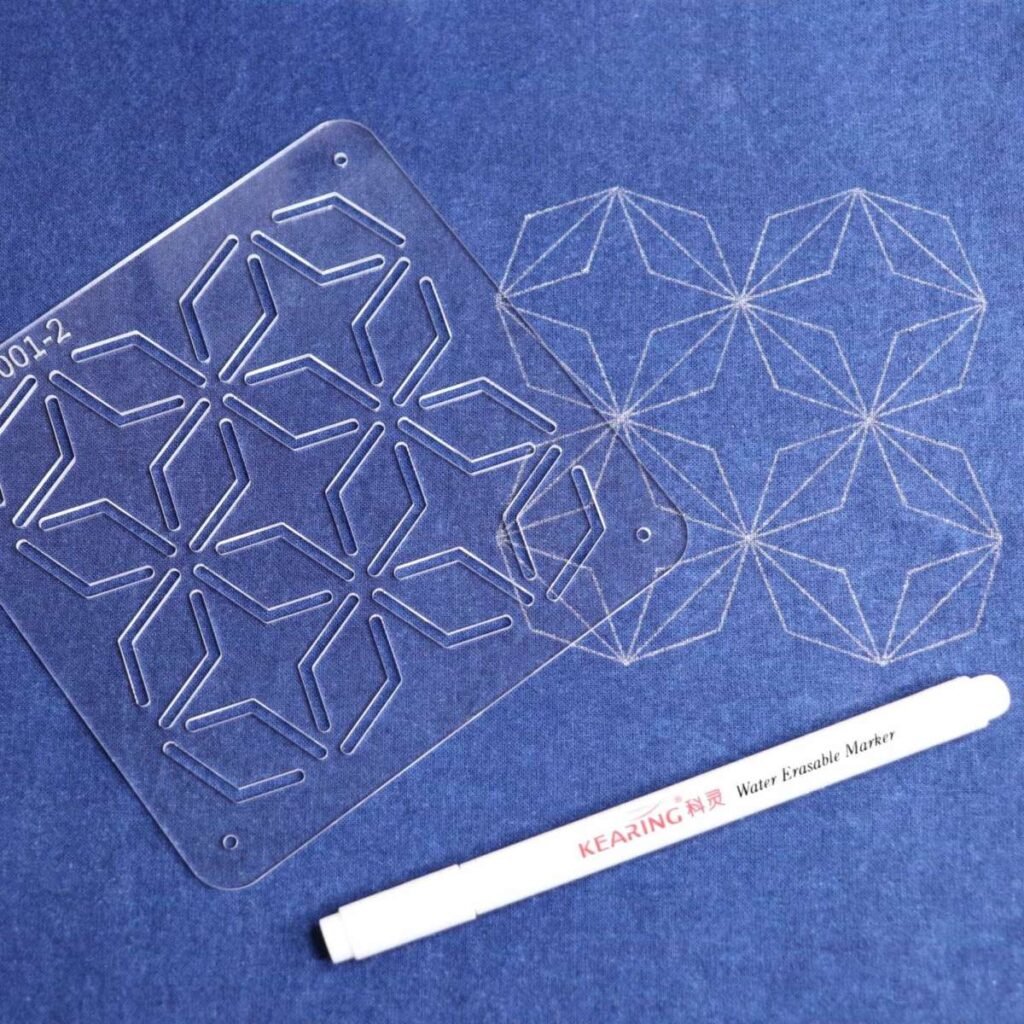
Understanding Basic Techniques:
Sashiko primarily employs a running stitch, a simple yet versatile stitch that forms the foundation of this embroidery technique. Traditionally, sashiko stitching is done in a grid pattern, with rows of evenly spaced running stitches creating geometric designs and patterns.
To familiarize yourself with the running stitch, start by threading your sashiko needle with your chosen sashiko thread. Begin by bringing the needle up through the fabric from the backside, leaving a small tail of thread to secure. Then, insert the needle back into the fabric a short distance away, creating a straight stitch. Continue this process, spacing your stitches evenly and keeping them parallel to one another.
As you stitch, pay attention to the length and tension of your stitches, aiming for consistency to ensure a neat and uniform appearance. Practice creating even, straight lines by maintaining a steady hand and gently guiding the needle through the fabric.
Keep in mind that sashiko stitches are typically longer than those used in traditional embroidery, with each stitch spanning multiple threads of fabric. This helps to create a distinctive textured effect and adds to the visual appeal of the finished piece.
Experiment with different stitch lengths and spacing to achieve different effects and textures in your sashiko work. For example, stitching closer together will create denser patterns, while spacing stitches farther apart will result in more open and airy designs.
As you become more comfortable with the running stitch, you can explore variations such as double running stitch or seed stitch to add depth and complexity to your sashiko projects. These variations allow for greater creativity and expression while still maintaining the simplicity and elegance that are characteristic of sashiko embroidery.
By familiarizing yourself with the running stitch and practicing creating even, straight lines, you’ll build a strong foundation for your sashiko stitching journey. With patience, practice, and a little creativity, you’ll soon be stitching stunning sashiko designs with confidence and skill.
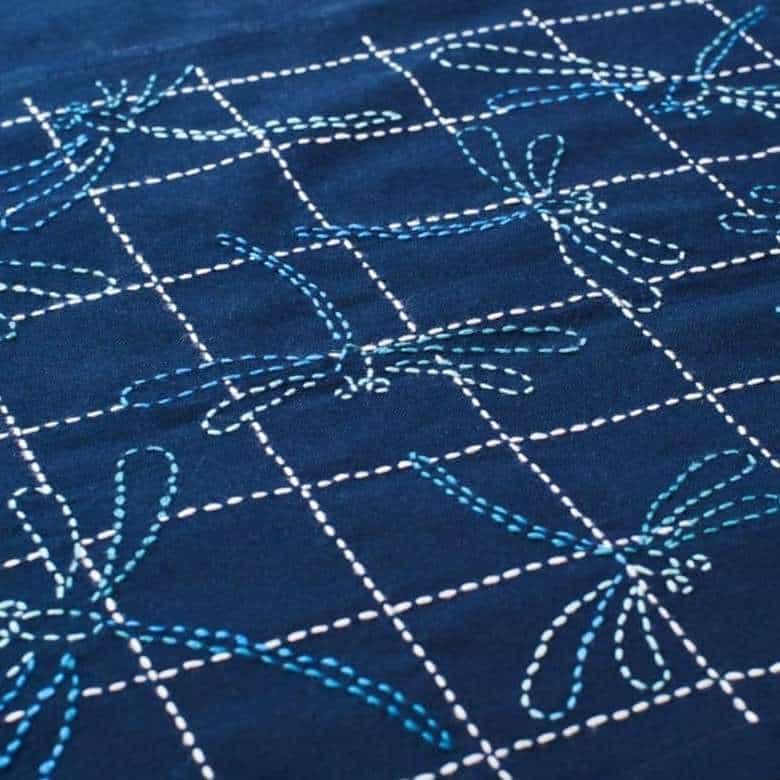
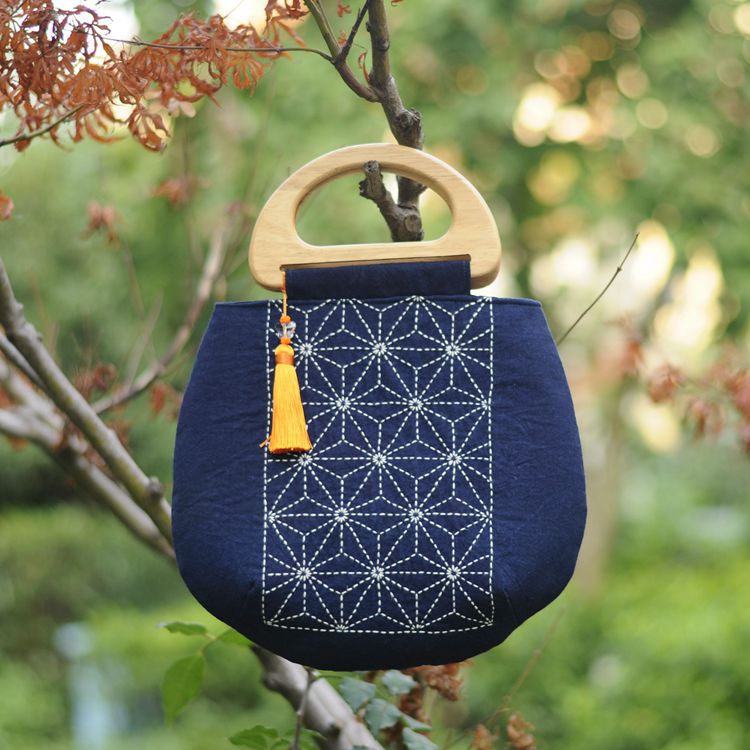
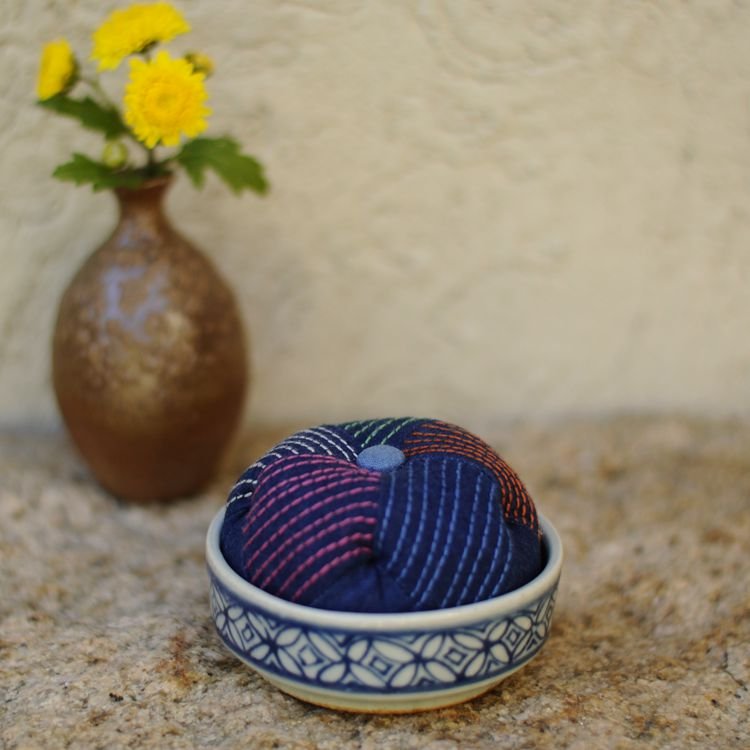
Preparing the Fabric:
Before starting your sashiko stitching, it’s essential to prepare your fabric by cutting it to the desired size and marking your stitching lines using a fabric marker. This step ensures that your stitches are evenly spaced and your design remains cohesive.
Start by selecting a piece of fabric that is suitable for sashiko stitching. Traditionally, tightly woven cotton fabrics such or linen are preferred for their durability and ability to hold stitches well. You can choose to work with pre-cut fabric squares or purchase fabric by the yard and cut it to your desired size using fabric scissors or a rotary cutter and cutting mat.
Once you have your fabric cut to size, it’s time to mark your stitching lines using a fabric marker. For traditional sashiko designs, geometric patterns or motifs are often featured, such as squares, diamonds, or interlocking circles. You can find pre-printed sashiko fabric with these designs already marked, or you can create your own design by drawing it directly onto the fabric.
Using a fabric marker, lightly sketch stitching lines onto the fabric, ensuring you evenly space and align them according to your chosen design. Keep in mind that sashiko stitches are typically worked in a grid pattern, so you may want to use a ruler or grid template to help guide your markings and maintain consistency.
As you mark your stitching lines, take care to use a light touch to avoid pressing too hard on the fabric, which can cause the markings to become difficult to remove later. It’s also a good idea to test the fabric marker on a scrap piece of fabric to ensure it will wash out cleanly once you’ve finished stitching.
Once your fabric is marked and ready to go, you’re all set to begin your sashiko stitching journey. With your design in place and your fabric prepared, you can now focus on the meditative and rewarding process of stitching, bringing your sashiko masterpiece to life one stitch at a time.


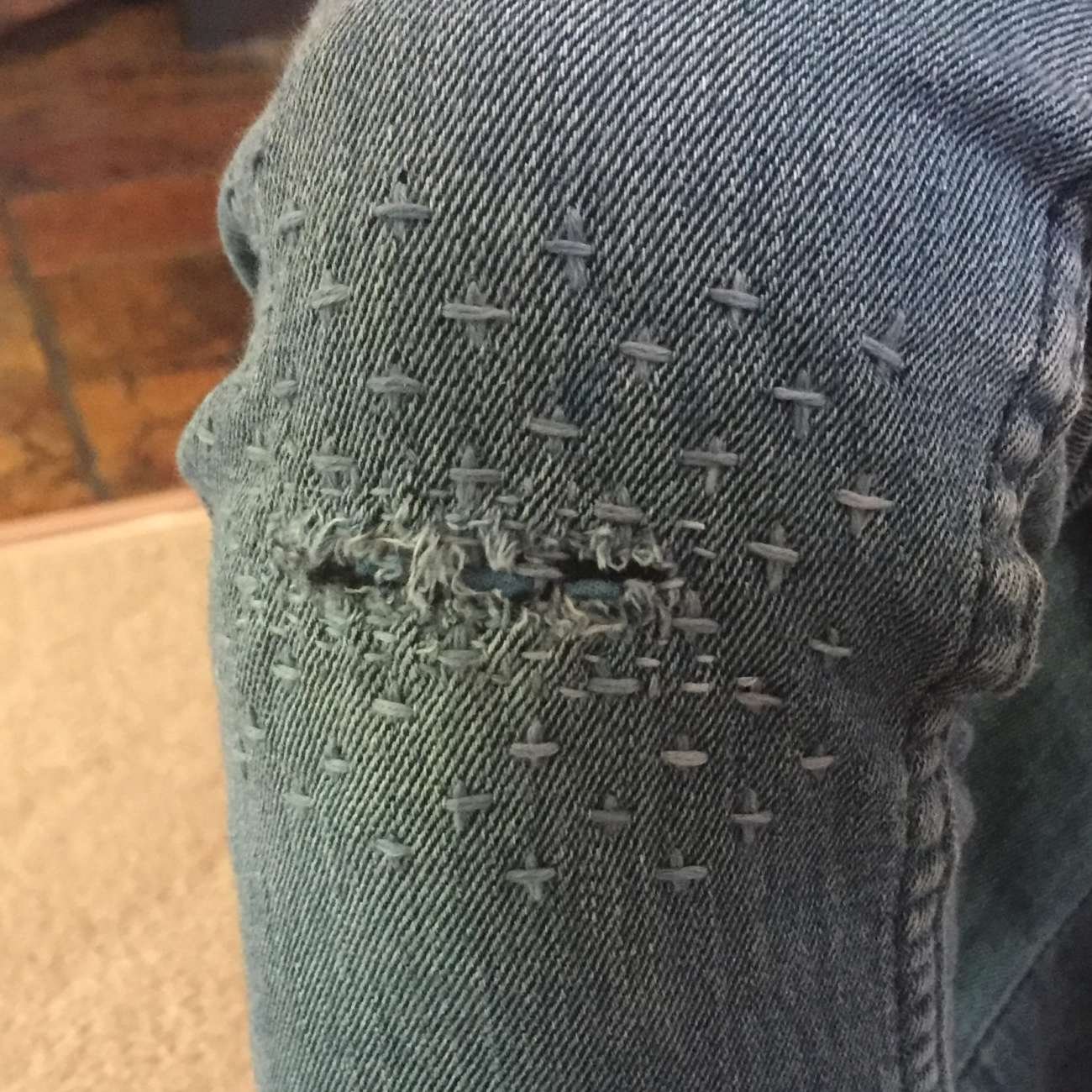
Thread Your Needle:
Before you begin stitching, it’s time to thread your sashiko needle with a length of sashiko thread. Sashiko needles are longer and sturdier than traditional sewing needles, with a larger eye to accommodate the thicker sashiko thread.
Start by cutting a length of sashiko thread, typically around 18 to 24 inches long, depending on the size of your project and your personal preference. Sashiko thread is thicker than regular embroidery thread, giving your stitches a bold and distinctive look.
Next, gently thread one end of the sashiko thread through the eye of the sashiko needle, taking care to leave a small tail of thread protruding from the eye. This tail will be used to secure the thread in place with a knot once the needle is fully threaded.
To create a knot at the end of your thread, you can use a simple overhand knot or a double knot for added security. Hold the tail of the thread between your thumb and forefinger, then wrap the thread around your finger once or twice to form a loop. Pull the end of the thread through the loop to create a knot, tightening it securely against the fabric.
Alternatively, you can use a quilter’s knot to start your stitching without leaving a visible knot on the fabric. To create a quilter’s knot, pinch the end of the thread between your thumb and forefinger, then wrap the thread around the tip of your needle two or three times. Hold the wraps in place with your thumb and forefinger, then slide the wraps off the needle and pull tight to form a knot at the end of the thread.
Start Stitching:
With your fabric prepared, needle threaded, and design marked, it’s time to begin stitching your sashiko masterpiece.
Start by positioning your needle at the beginning of one of your marked stitching lines, ensuring you secure the knot or tail of your thread on the backside of the fabric.
To execute the running stitch, push the needle up through the fabric from the backside, pulling it through until the knot or tail of the thread catches on the fabric and prevents it from pulling through completely. Then, insert the needle back into the fabric a short distance away, typically about 4mm to 6mm, creating a straight stitch on the surface of the fabric.
As you stitch, focus on maintaining even spacing and consistent stitch length to achieve a uniform appearance. The running stitch should be neat and tidy, with each stitch parallel to the next and evenly spaced along the stitching line. Take your time and work methodically, paying close attention to detail as you progress along your marked lines.
To maintain consistent spacing between stitches, you can use your thumb or index finger to guide the needle as you work, keeping each stitch the same distance apart. Alternatively, you can use a ruler or grid template to help guide your stitches and ensure they remain straight and evenly spaced.
As you stitch, periodically check the tension of your thread to ensure it’s neither too loose nor too tight. The thread should glide smoothly through the fabric without causing puckering or distortion. Adjust your tension as needed by gently pulling on the thread to tighten or loosen it as required.
Continue stitching along your marked lines, following your design and filling in each section with the running stitch. Take breaks as needed to rest your hands and eyes, and enjoy the meditative and rhythmic process of sashiko stitching.
With each careful stitch, you’re not only creating a beautiful piece of textile art but also connecting with centuries of tradition and craftsmanship. So, embrace the journey and immerse yourself in the timeless art of sashiko stitching, one stitch at a time.
Maintain Tension:
Keeping your fabric taut as you stitch is essential for maintaining even tension and preventing puckering in your sashiko work. Puckering occurs when the fabric becomes wrinkled or gathered due to uneven tension in the stitches, detracting from the overall appearance of your piece.
By keeping your fabric taut and maintaining even tension throughout the stitching process, you’ll achieve professional-looking results that showcase the beauty and precision of sashiko embroidery. So, take your time, pay attention to detail, and enjoy the satisfaction of creating flawless sashiko workmanship.
Explore Patterns:
As you continue to hone your sashiko skills, don’t be afraid to experiment with different patterns and designs. While traditional geometric motifs are a classic choice, there’s also plenty of room for creativity and innovation in sashiko stitching.
Explore traditional patterns inspired by nature, such as waves, pine needles, or cherry blossoms. These motifs have deep cultural significance in Japan and can add a touch of elegance and symbolism to your sashiko projects.
Alternatively, try your hand at contemporary variations of sashiko, incorporating modern elements and personal touches into your designs. Experiment with asymmetrical patterns, abstract shapes, or even combine sashiko with other embroidery techniques for a unique look.
Consider playing with color as well, using contrasting threads to create bold, eye-catching designs or subtle variations for a more understated effect. Remember that you don’t have to limit sashiko to traditional indigo and white; feel free to experiment with a rainbow of hues to suit your personal style.
If you’re feeling adventurous, try mixing different stitches and techniques to create intricate textures and patterns. Combine running stitch with decorative stitches like kawari-nui (ornamental stitching) or hitomezashi (one-stitch sashiko) to add depth and dimension to your designs.
Don’t be afraid to let your imagination run wild and push the boundaries of traditional sashiko. After all, sashiko is a versatile art form that has evolved over centuries, and there’s no limit to what you can create with a needle, thread, and a bit of creativity.
Practice and Patience:
Stitching, like any skill, takes time and practice to master, so be patient with yourself as you develop your sashiko skills. If you’re new to sashiko, it’s best to start with simpler designs and gradually progress to more complex patterns as you become more confident in your abilities.
Begin by practicing basic stitches such as running stitch, the foundation of sashiko, and then experiment with variations like seed stitch or chain stitch. These simple stitches will help you become familiar with the rhythm and tension required for sashiko stitching.
As you gain proficiency with basic stitches, you can start incorporating them into simple geometric patterns or traditional motifs like waves, mountains, or flowers. There are countless sashiko patterns and designs to explore, so don’t be afraid to experiment and find what resonates with you.
Remember to take your time and focus on the process rather than rushing to finish. Sashiko is as much about mindfulness and meditation as it is about creating beautiful textiles. Enjoy the rhythmic repetition of stitching and the satisfaction of seeing your design come to life with each stitch.
If you make mistakes along the way, don’t get discouraged. Sashiko is forgiving, and imperfections are part of its charm. Embrace the uniqueness of your work and learn from any errors to improve your skills for future projects.
Above all, have fun with your sashiko journey. Whether you’re stitching for relaxation, creativity, or cultural appreciation, sashiko offers a rewarding and fulfilling experience that you can continue to enjoy for years to come. So, gather your materials, find inspiration in traditional patterns or create your own designs, and let the stitching begin!
Finishing of your Sashiko Stitchwork:
Once you’ve completed your stitching, it’s time to put the finishing touches on your sashiko piece. Start by gently washing away any fabric markings or residue left from your stitching process. Use lukewarm water and a mild detergent, being careful not to agitate the fabric too much to avoid distorting the stitches.
After washing, carefully rinse the piece to ensure you remove all soap, then gently squeeze out excess water. Next, lay the piece flat on a clean towel and roll it up, pressing gently to remove even more moisture. You can repeat this process with a dry towel to further absorb excess water.
Once your sashiko piece is damp rather than wet, it’s time to press it to set the stitches. Lay the piece flat on an ironing board or a clean, flat surface, making sure the stitches are lying flat and evenly distributed. Use a warm iron, without steam, to press the piece from the back side. Avoid pressing directly on top of the stitches to prevent flattening them.
Continue pressing until the fabric is dry and the stitches are set. Take care not to over-press, as this can cause the fabric to become stiff and lose its natural drape.
Once your sashiko piece is dry and pressed, take a moment to admire your handiwork. You’ve transformed a simple piece of fabric into a beautiful work of art, rich with history and tradition. Whether you choose to frame it, incorporate it into a larger project, or simply display it as is, your sashiko piece is sure to be a cherished addition to your home.
Now that you’ve finished your piece, you can proudly showcase your skills and share the beauty of sashiko stitching with others. Enjoy the satisfaction of a job well done, and consider exploring new patterns and techniques for your next sashiko project.
Completing your Sashiko Stitchwork
After completing your Sashiko Stitchwork, take a moment to truly admire your creation. Appreciate the time and effort you’ve put into each stitch, forming intricate patterns and designs. Hold the fabric up to the light and observe how the threads intertwine, creating a beautiful texture.
Now, let your imagination soar as you consider the many ways you can incorporate your sashiko piece into various projects. If you’re passionate about quilting, why not integrate it into a quilt top as a striking focal point? The contrasting colors and geometric shapes of sashiko can add depth and visual interest to your quilt design.
Alternatively, you could use your sashiko piece to embellish clothing, such as adding it to the pockets of a denim jacket or the cuffs of a shirt. This personalized touch will elevate your wardrobe with a unique and handmade flair.
For those interested in home decor, consider framing your sashiko piece and displaying it as wall art. It will serve as a testament to your creativity and craftsmanship, adding character and charm to any room.
No matter how you choose to incorporate your sashiko piece into your projects, remember to enjoy the process and take pride in your handiwork. Each stitch tells a story and reflects your dedication to the art of sashiko.



Sashiko Stitching Journey of Exploration and Discovery
So grab your stitching supplies and embrace the possibilities to let your creativity shine.
Whether you prefer traditional motifs or want to explore your own style, sashiko provides limitless opportunities for creativity. Enjoy stitching and let your imagination guide you as you bring your vision to life with each stitch.

